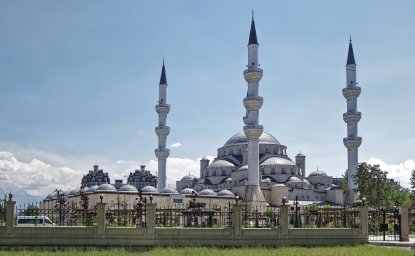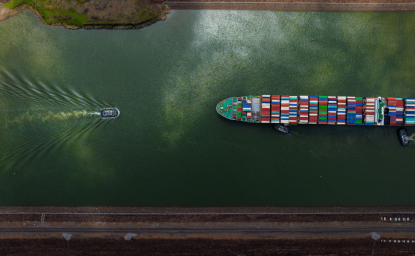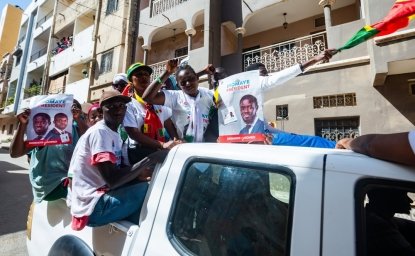Kennan Cable No. 46: Greater Eurasia: Russia's Asian Fantasy

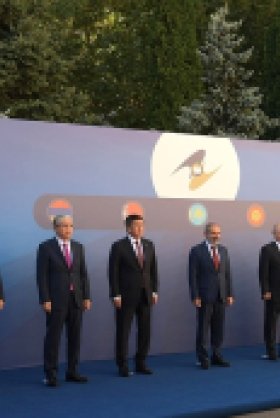

Is there a grand strategy that informs Russia’s activities abroad and, if so, what is it? For years it seemed that President Putin based his foreign policy mainly on his 2005 statement to the Russian nation that the collapse of the Soviet empire “was the greatest geopolitical catastrophe of the century.” The task of Russian policy was therefore to reclaim by whatever means necessary as much control over former Soviet territories as possible. This led to his seizure of Georgian territory in 2008, his Crimean grab of 2014, and his armed incursions into eastern Ukraine in 2014-2019. More recently, it has led to his forcing Kyrgyzstan to join his politics-driven Eurasian Economic Union and his current bullying of Uzbekistan and Tajikistan to follow suit.
In practice, Russia’s foreign moves in places as diverse as Eastern Europe, Syria, and Africa seem to be guided more by opportunism than strategy. This has not sat well with some members of Moscow’s policy-oriented intelligentsia. Modern Russia, after all, is heir to a half millennium of messianic ideologies that justified and encouraged the expansion of territories under Moscow’s rule. Whether building the Third Rome, destroying the Tatars, placing the Cross of St. Vladimir atop the Hagia Sofia in Constantinople, building a Holy Alliance against future Napoleons, protecting Europe against revolution in 1848, conquering Muslim Central Asia in the 1860s, or aspiring to Sovietize Eastern Europe under Stalin, ideas, not mere opportunism, have driven Russia’s actions abroad. Even as Putin repeated his assertion about the collapse of the USSR, a deficit of theory was forming in Moscow’s foreign policy circles.
Among the first to seek to fill this was the complex, vexed, and hyperactive strategist Alexander Dugin. An Orthodox Christian of Old Believer ancestry, Dugin favors decentralization and self-government within Russia but champions an aggressive foreign policy that would link “orthodox” Russia with “orthodox” Muslims and “orthodox” Hindus in a war against secularism as such. As recently as his visit to Washington a decade ago, he expressed no particular animus against the US and instead focused his venom on wayward Europe. Bluntly, Dugin wanted Moscow to turn its back on a debauched Europe and reorient Russia towards the East.
Now a new grand strategy along these lines has emerged and captured the imagination of many members of Moscow’s geostrategic circles. Like Dugin, Alexander III, and predecessors going back to Zosimus, Metropolitan of Moscow in 1492, the cornerstone of this new concept is the foursquare rejection of Europe. But unlike its predecessors, the new concept, grandly called “Greater Eurasia,” defines Russia as an equal partner with China and dreams of a future in which Russia and China would join forces with India and thereby become the dominant world power. For Russia to fulfill this grand destiny, it must first reject Europe and become an Asian political and economic power. The key to achieving this goal is to develop Siberia as a transport corridor to the East and as an economic powerhouse in its own right.
The concept of a Greater Eurasia arose steadily after about 2008. The term appears to have arisen as a rejoinder to Western proposals in that period for a “Greater Central Asia.” Since 2015 the tempo has increased, with a proliferation of articles, books, symposia, and conferences. Indeed, the Greater Eurasia industry, in its many variants, is now the epicenter of geostrategic thinking in Moscow. It has also caught the attention of a number of astute Western analysts, who have already given us valuable overviews and studies on the subject.
Champions of the notion of a “Greater Eurasia” consider that the greatest challenge involved in developing the concept is to overcome physical distance on the Eurasian land mass; in other words, to master the geography. It is therefore not surprising that the venerable Russian Geographical Society would devote a 375-page special edition of its journal, Questions of Geography, to the general subject. Based on a conference held by the Higher School of Economics entitled “Russia’s Place in the Greater Eurasia Now Being Formed,” this is, for the time being, Russia’s definitive statement on the subject. All of the twenty-five writers are Russians.
According to authors D.V. Suslov and A.S. Piatachkova, the concept of Greater Eurasia is “undoubtedly one of the most important narratives of international relations development of the first half of the twenty-first century.” Having made this ringing declaration, Suslov and Piatachkova then acknowledge that, “There is no consensus in the scientific or expert community regarding its meaning.” Either the emperor is wearing an entire wardrobe or, perish the thought, he has no clothes. Here, for better or worse, is the definition offered by our two lead writers:
“…a regional or macroregional international community constructed through interaction. It is based not on history or civilizational proximity or even on the number of economic projects and interdependence, but on the special quality and intensity of political relations between its constituent states, first of all between China and Russia.”
Note the stress on political relations. There is not a trace of Marxism or even of economics in this formulation, no mention of any productive forces that might be driving the two powers together. Nor do the champions of Greater Eurasia claim that it is based on any cultural affinity. In a striking departure from Dugin, another author in the volume, T. V. Bordachev, states baldly that there are no historical or cultural affinities between Russia and China that might underlie such a partnership. But was it not precisely the supposed historical and cultural divide between Russia and Western Europe that sent Russia on its eastward quest in the first place? Unfortunately, our Moscow experts fail to tell us whether they do, or do not, consider culture and history relevant to grand strategy. They want it both ways, as convenient.
Sergei Karaganov, Dean of the School of International Economics and Foreign Affairs of the National Research University, chairman of Putin’s Valdai Club, and one of the most ardent champions of Greater Eurasia, disagrees with Bordachev’s denial that the concept has any cultural or historical basis. In a line straight out of the pioneer Eurasianists of the 1920s, Karaganov proclaims that Greater Eurasia, once implemented, will create an “Asia for the Asians.” One wonders how Pushkin, Turgenev, Checkhov, or Mikhail Bulgakov might have viewed this curious boast from a Russian chauvinist whose surname has a Turkic root!
The one thing that all writers in this volume agree upon is that Greater Eurasia will come into being through the merging of China’s Shanghai Cooperation Organization (SCO) and Russia’s Eurasian Economic Union (EEU). However, the gross imbalance of demography and economic productivity between these two entities creates a problem for Moscow. To bulk up its EEU, Russia must persuade, cajole, or bully sovereign states in Central Asia and the Caucasus to join, which it is fact doing. Such strong-arm methods cause those on the receiving end to act more out of fear than conviction. President Nazarbayev of Kazakhstan, long a champion of economic collaboration with Russia, did not inform even his own staff of his intentions in 2014 when he rushed off to Moscow to sign the EEU agreement. Kyrgyzstan’s president in 2015 stated publicly that he chose “the lesser of two evils” but later reported how Moscow had virtually bludgeoned him into joining. The Armenians, dependent on military aid from Moscow in its fight with Azerbaijan over Karabakh, had no choice in the matter. Uzbekistan is now in Moscow’s sights, and has agreed to enter EEU with observer status for five years. Should Uzbekistan actually join, it will leave Tajikistan with no choice but to follow suit, and will expose Afghanistan to the same pressures as its northern neighbors.
Besides the weakness of its EEU in comparison with China’s SCO, Moscow worries about the growing military disparity between itself and Beijing. Acknowledging that China has military agreements with all of Russia’s continental allies while Russia’s military ties with countries in East and Southeast Asia are weak, authors V. B. Kashin and A. I. Druzhinin call for a major initiative to expand Russia’s military presence in Asia. Specifically, they want the Russian navy to focus on ASEAN countries, opening bilateral ties and building bases there. This may not bridge the stark imbalance of power between Moscow and Beijing but it will begin to address one of Moscow’s most gnawing concerns.
Russia is bound to be the junior partner in any relationship with China. Russia’s Greater Eurasia enthusiasts know this, and have therefore begun dreaming about adding a third element to the structure, namely, India. Hoping to build on Moscow-New Delhi ties dating back to Soviet times, they fantasize about a grand triad that will dominate global affairs. But one little problem remains, namely the gulf between the political systems of India and China. Andrei Kortunov deftly addresses this disparity (which he calls a “schism”) by suggesting that China might handle relations with authoritarian countries worldwide while India could handle the partnership’s relations with democracies. One wonders what role is left for Russia.
Besotted by this grand but bizarre fantasy, Russia’s experts predict that the alliance between Russia, China, and India will become a powerful force for peace on earth. The two main editors of the volume, D. V. Suslov and A. S. Piatkovskaia, solemnly declare that the triad of which they dream will become “a huge resource for solving the region’s problems, including terrorism, extremism, the problem of Afghanistan and even the India-Pakistan conflict.”
If power can be measured by the number of signed agreements, then these enthusiasts have a point. An expanding web of formalistic documents already link EEU members to Russia and to each other. Impressive on paper, these may prove to be as insubstantial as the documents that led to the formation of Moscow’s Commonwealth of Independent States in December, 1991. Far more concrete are the many investments and grants from China that have created bonds between Beijing and all its Eurasian partners, including Russia.
It is not surprising that the extent and grandiosity of the Russians’ search for a new identity has attracted the attention of a number of Western scholars. Several European and American books and articles competently present the program and its dynamics, offering astute judgments along the way. Russians return the compliment by drawing on Western writers to bolster their case. Indeed, one can only smile to see how a strategy that is designed to turn Russia away from Europe and the West has been grounded in works by Western thinkers.
Pride of place among Western sources goes to the pioneering Anglo-Scottish geographer Sir Halford Mackinder (1861-1947), author of the so-called Heartland Theory and the founding father of geopolitics. Writer after writer in this collection strain to demonstrate how the concept of Greater Eurasia fulfills or at least refines Mackinder’s predictions. Groping for international justification and vindication, they also cite approvingly the works of B. Bizan in Copenhagen and especially the Australian-born English theorist, Hedley Bull (1932–1985). Besides the natural desire of academics to festoon their writings with footnotes, these many citations suggest that the authors themselves feel a lurking insecurity about their sweeping arguments.
Russian geographers may cull the writings of foreign authors in search of support for their theses, but they realize that works by members of what they call “the English school” provide at best a fragile platform on which to erect their theoretical palaces. They also know that the writings of Marx offer no support for the Russians’ new theses, even if they wanted to invoke them, for the simple reason that Greater Eurasia is more a political construct than an economic fact. And so some new theory of history and geography is called for.
Happily, A.B. Savchenko and V.A. Vorobieva of the Russian Presidential Academy of Public Economy and Public Administration pop up with precisely what is needed. In their contribution to the volume, they divide human history into three periods: the pre-machine age; the machine age; and the digital age. Russia, they postulate, became a European power during the pre-machine age, while seeking an opening to the West. It also stretched eastward then and became a Pacific power. Then, during the machine age, Russia abandoned Alaska and shifted its focus to Siberia’s maritime zone and to Central Asia. Now, as the digital age dawns, Russia sees its destiny in Greater Eurasia as a whole.
In the face of such highfalutin theorizing about the digital age, it is puzzling that the main initiatives that our theorists propose to bring Greater Eurasia into being are solidly those of the machine age, and that the theory as a whole is grounded on old-fashioned and pre-digital modes of transport. Politics may be the rationale and driver for the notion of Greater Eurasia but Russia cannot become part of it without vastly expanding its railroad and road links with the Pacific. Little attention is devoted to polar sea routes and air links are scarcely mentioned. Meanwhile, V.Iu. Maslov of the Institute of Economics and Industrial Engineering bluntly calls for the construction of two new rail lines across Siberia to supplement the existing Trans-Siberia Railroad. Part of one of these—Baikal Amur Magistral (BAM)—already exists, but to complete it and add a yet more northern “polar” route would be a task on the scale of Stalin’s most grandiose project.
Maslov and his colleagues believe in scale. Maslov’s excited vision calls for “large complex projects” in every sector, e.g. massive investments by the state. No slave to mere balance sheets, this professor of economics and engineering insists that these vast outlays be undertaken “not for immediate commercial profit.” How, then, will they be financed, and how will the public respond to staggering expenditures that may bring psychological payoffs to some part of the population, but no rubles?
Do not fear, Maslov soothingly assures us, for all will turn out well in the end. After all, didn’t President Roosevelt’s expensive Federal Highway Program help lift the U.S. out of the Great Depression? Sorry, Esteemed Professor, but it was war, not highways, that lifted America out of the depression, and it was President Eisenhower, not Roosevelt, who launched the Federal Aid Highway Act…in 1956, years after the Great Depression had ended.
In order to manage these and other “large and complex projects,” the city of Novosibirsk must be transformed into, in Maslov’s words, “the main intellectual center for the reconstruction of Asian Russia.” This shift of Russia’s economic and political center eastward, we are told, should be a “national task,” one that will in turn inspire millions to settle in unpopulated zones of Siberia. Thanks to this happy development, the vast reaches of Siberia will become a salubrious place to live and raise families, and not merely a bridge to Asia. Indeed, the wilds of Siberia will be transformed into “a laboratory of the future, a huge testing ground for new solutions: institutional, managerial, and technological.”
Pesky details complicate this rosy vision. On the one hand, people today are not flocking to Siberia, but leaving. Recent reports reveal that Russians are abandoning large zones of eastern Siberia and their places are being filled by immigrant Chinese renters. If, however, millions of Russians were to pick up roots and settle there, would this not further depopulate Russia proper, where there already exits a demographic vacuum that is being filled by migrants from Central Asia? Hence this astonishing paradox: Putin and his Russian nationalists refer condescendingly to the now sovereign states of Central Asia and the Caucasus as “Russia’s near abroad,” but their own vision for a Greater Eurasia will, if implemented, reduce Russia to the status of an ethnic extension of Central Asia; in short, “Central Asia’s Near Abroad.” It is no surprise that the globe-spinners who are touting their vision of a Greater Eurasia are as silent on these issues as they are about financing for their “large and complex projects,” and about Russia’s flagging demographic presence in Siberia itself.
But since when must fantasies be trimmed to fit reality?
Suppose that the Greater Eurasia project does move forward, in whole or in part. What is likely to be its impact in specific world regions? In some areas of the globe its implications would be clear. Across Southeast Asia, for example, it would lead to a substantial Russian military build-up in the form of naval bases and airfields. Its effects would also be visible in the major charm campaign that Russia would direct towards India.
More problematic would be its impact on Eastern Europe, Ukraine, the Baltic countries, the Caucasus, and Central Asia. On the one hand, as Moscow redirects money and attention towards Siberia and the Asia-Pacific region, these areas of former Soviet control would no longer be Russia’s prime geostrategic focus. Increased expenditures in Siberia and Asia—not to mention Putin’s growing commitments in the Middle East—would limit the Russian government’s ability to invest in these regions, while the Russian private sector is unlikely to take up the slack.
However, it would be a serious mistake to conclude that Putin would be so enraptured by his vision of Greater Eurasia that he would become indifferent to the former Soviet space. After all, he relies on the expansion of the EEU to strengthen his hand when dealing with Beijing. Paradoxically, even as Russia looks to Asia, Moscow will persist in its effort to expand its control in Eastern Europe, the Caucasus, and Central Asia. We can expect Putin to remain true to form. In order to expand the Kremlin’s hegemonic control, he will opportunistically exploit all signs of weakness in what his government both anachronistically and sinisterly calls its “zone of privileged interest.”
Central Asia and the South Caucasus warrant our special attention in their own right, because they pose a special challenge to Moscow’s Greater Eurasia project. Like other prospective members of the EEU, the countries of Central Asia (and Azerbaijan as well) have the potential to add to the size and “heft” of the new trade zone and thereby strengthen Moscow’s bargaining power as it seeks greater parity with Beijing and its SCO. For this reason, Moscow is bound to intensify its pressure on Azerbaijan, Tajikistan, and Uzbekistan to join the EEU. Will America and Europe respond to these provocations and, if so, how?
Yet at the same time, Russia is clearly unprepared to accept Central Asia as an equal geostrategic partner. Having embraced Mackinder’s view that the key to power is access to the world’s oceans, Russian strategists dismiss the notion that Central Asia is a crucial heartland and define it instead as a marginal “rimland,” destined to be subordinated to those countries with access to the world’s oceans.
This theoretical argument rationalizes a blunt and inconvenient geopolitical truth: that Russia demands that the main continental transport corridor should run through Siberia and not through Central Asia and the Caucasus. L.B. Vardomskii of the Academy of Science’s Institute of Economics makes this clear in his contribution to the Greater Eurasia volume. In other words, Kazakhstan, Kyrgyzstan, Uzbekistan, Azerbaijan and Georgia are not Russia’s partners in transport, but its competitors in a zero-sum game.
This is not a new posture for Moscow. Long before talk of a New Silk Road arose in 2005, Russian officials made clear at conferences in St. Petersburg and Urumchi that they opposed east-west routes running through Kazakhstan and Central Asia and demanded instead that the existing Trans-Siberian Railroad serve as the main link. But the Chinese blithely ignored the Russians’ demand and proceeded with their preferred routes through Kazakhstan, Central Asia, and the Caucasus.
What, then, do apologists of Russia’s Greater Eurasia theory see as the destiny of Central Asia and the Caucasus? Having bucked Mackinder on the heartland issue, they then revert back approvingly to that English thinker and declare that Central Asia will become “a repository of raw materials and energy resources.” But isn’t this precisely the fate from which all countries in Central Asia and the Caucasus are straining to escape? Without exception, they all seek to reduce their dependence on natural resources and to diversify their economies through technology and modern agriculture. This puts Russia’s Greater Eurasia strategy on a collision course with all Central Asia.
To make matters worse, at least one of the contributors to the Greater Eurasia volume, A.B. Likhacheva, implies that Siberia will become an exporter of water to Central Asia. This cockamamie idea, first broached in Moscow a generation ago and promptly killed by Russian environmentalists, calls for the large-scale diversion of water from Siberian rivers to Central Asia and Xinjiang. In reviving it now, this author bluntly calls Russia’s water a “power factor.”
Drawing back from these regional particularities, let us ask whether Russia’s fashionable Greater Eurasia strategy has any chance of ever being implemented. Impeding China’s role will be the ongoing and inevitable slowdown of growth in that country. But it is likely that China will continue to attend to its mounting domestic needs and to its own priority security projects, and that it will continue to project its power abroad. Russia, by contrast, will increasingly have to deal with its undiversified economy, unresolved centrifugal forces, rising domestic dissent, and a transition of power at the top. The only way it can make the investments in Siberia that the Greater Eurasia project requires will be to curtail investments elsewhere, a sure-fire formula for domestic unrest. Otherwise, Russia as part of Greater Eurasia will continue to languish, perhaps benefiting from one or two transport projects but otherwise reaping few of the benefits of which it dreams today.
Thus, the gap between China and Russia will grow. Whether or not China and India will reach some sort of accord is unknown. But Moscow will surely continue to court India on its own, signaling to Beijing that it has a backup plan if Greater Eurasia lapses. Under any circumstances, Moscow’s inevitable and very public demotion to the status of China’s junior partner will not go down well among Russian nationalists.
Meanwhile, members of the Eurasian Economic Union will continue to pursue their own political and economic interests, even as they attend EEU meetings and pass resolutions. And, significantly, even as part of Greater Eurasia they will seek to reassert the principle of balanced relations among world powers that informed their strategy during the first two decades of the new century.
Andrei Kortunov of the Russian International Affairs Council and one of the more sober authors in the Greater Eurasia volume, argues that the success of Greater Eurasia depends ultimately on the future of the China-India relationship. He rightly points out that China and India are fundamentally different, that they don’t understand each other, and that the only hope for accord is that a division of labor between authoritarianism and democracy can somehow be worked out.
In conclusion, Kortunov offers the slim hope that Russia, having embraced the Greater Eurasia project at its outset, can somehow craft a positive outcome. But he is skeptical about Russia’s ability to do so, given its own internal constraints, whether economic, social, or political.
“What is the alternative?” Kortunov asks. “Can Russia return to Europe?” On this important issue he is skeptical, citing Moscow’s clear preference for authoritarianism at home and abroad. Although Kortunov doesn’t say it, he foresees a future in which his homeland is once more cast adrift between East and West, searching for an identity which Mackinder once seemed to offer but which in the end is denied to Russia. In a prolix yet clear statement on Russia’s place in the world, Kortunov declares that China and India comprise the “inner crescent” of Eurasia and that all the other countries, including Central Asia, the Middle East and, significantly, Russia are “limitrophic” states. But checking the dictionary, we find that “limitrophic” means “adjacent to” or “bordering.” In other words, Kortunov demotes his country to the status of a borderland.
Given the realities of Russia today, this should not be surprising. The concurrent emergence of demographic, ethnic, institutional, technological, educational, medical, and political challenges impose heavy claims on an economy that is already weighed down by international and military commitments. Worse, the process of transforming a hydrocarbon-based economy to a modern technology-based economy has barely begun. It is no accident that Russia’s most advanced technologies are to be found in the military-industrial sector.
Further, one must stand in amazement that a country whose government claimed for 74 years that economics define life should now simply ignore economics as it sets forth its expansive new geopolitical strategy. But this volume offers not a single word on how the Russian economy will pay for the immense investments required to build Russia’s place in Greater Eurasia. Either the authors are economic illiterates, or they know they are marching down an economic blind alley and cannot say so.
No statement in this curious volume will stun readers more than the bland assertion by V.M. Kotliakov and V.A. Shuper of the Institute of Geography that Americans and Europeans are wrong to allow domestic concerns to determine foreign policy. On the contrary, they claim, foreign policy should determine domestic policy. This is precisely what the Greater Eurasia project calls for. It is equivalent to the nonsensical claim that a house can be built from the roof down. Besides being the ultimate refutation of Marxism, it marks the final rejection of even the pretense of being a democratic society.
Is there an alternative? There always is. At the 2017 meeting of then-President Nazarbayev’s Astana Club in Kazakhstan, Sergei Karaganov, one of Russia’s leading champions of the Greater Eurasia movement, returned again and again to his favorite subject. Finally, President Nazarbayev, in a statement later released publicly, stated that,
“As president I have access to many, many maps. But not one of them shows anything identified as “Greater Eurasia.” Does this exist? Is it real?
By contrast, I know that Central Asia exists and that it includes five countries that were formerly part of the Soviet Union, and Afghanistan. I know that we share a common past, a common culture, common values, and common understandings, and that we also face common threats. Furthermore, I know that we all know each other far better than outsiders know us.”
Coming from someone who is identified as a founding father of the Eurasian Economic Union, this statement cannot be ignored. It suggests that the real needs of many of the states that Moscow would like to gather together as part of its geopolitical stratagems are best satisfied by entities that are closer to home and over which they can exercise a degree of control. It suggests that economic development can best be achieved through cooperation and collaboration, not sovereignty-limiting megastructures, and that many states of Eurasia would rather build their international ties by starting with the foundation and not the roof.
Author
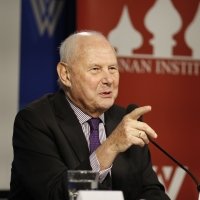

Kennan Institute
After more than 50 years as a vital part of the Wilson Center legacy, the Kennan Institute has become an independent think tank. You can find the current website for the Kennan Institute at kennaninstitute.org. Please look for future announcements about partnership activities between the Wilson Center and the Kennan Institute at Wilson Center Press Room. The Kennan Institute is the premier US center for advanced research on Eurasia and the oldest and largest regional program at the Woodrow Wilson International Center for Scholars. The Kennan Institute is committed to improving American understanding of Russia, Ukraine, Central Asia, the South Caucasus, and the surrounding region through research and exchange. Read more

